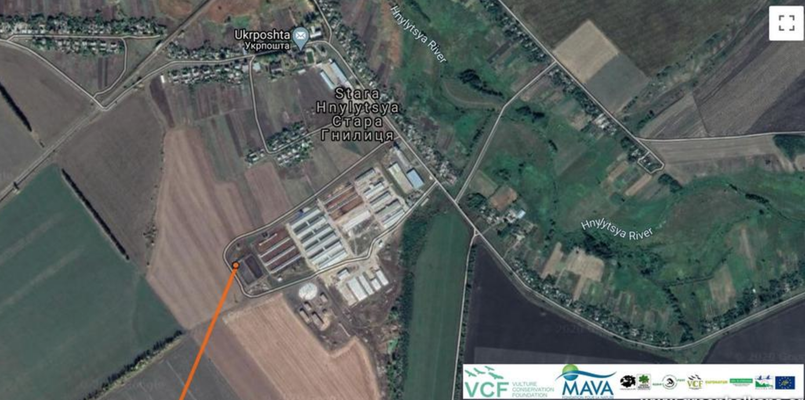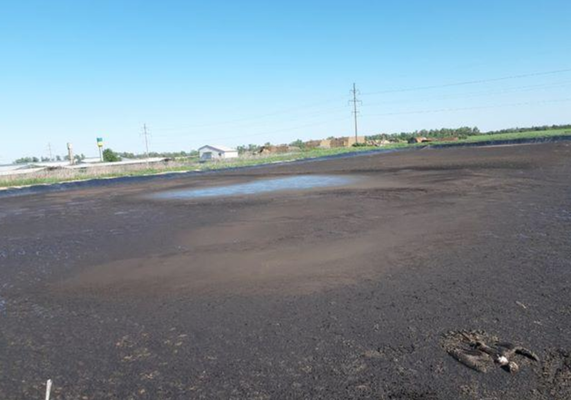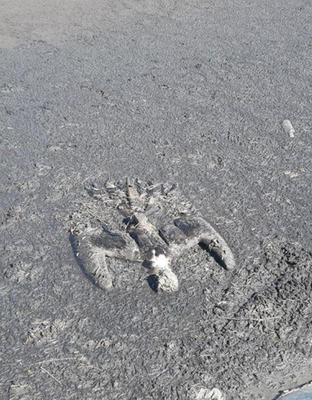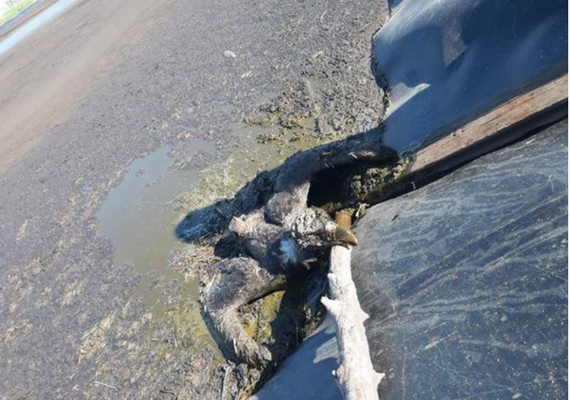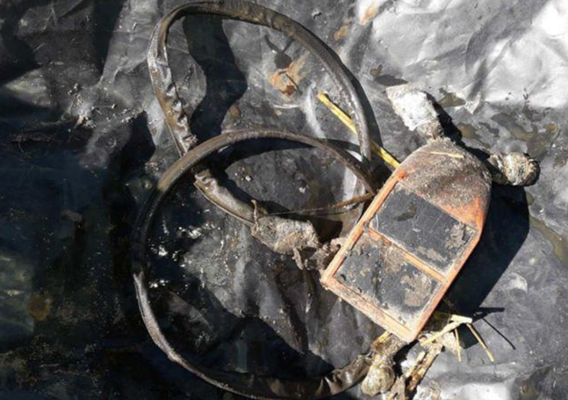
The Cinereous Vulture Sliven that travelled over 6405 km in 30 days, carrying out two round trips from Bulgaria to Ukraine, has met a tragic end. After all this wandering, the vulture most likely died from drowning in a wastewater reservoir in Kharkiv, Ukraine.
Sliven’s tragic death
The Vultures Back To LIFE team was closely tracking the movements of Sliven in the past few months when he surprised the whole team with his unexpected and vast movements. The team realised that something was wrong with the bird due to its GPS data and immediately organised a field check. The project team and local nature conservationists in Ukraine – Volodimir Buchko, Anton Vlaschenko, Irina Vorontsova and Viktoria Rosdolskay – swiftly visited the locations of the vulture’s death in just a couple of hours. Once at the scene, the field team found Sliven’s carcass in a wastewater reservoir near a cattle farm in Suha Hnylytsa village, Ukraine. The vulture was most likely lured by the stray dog’s carcass that was in the reservoir and could not fly out of the ‘wastewater liquid’, and drowned. The Vultures Back To LIFE project will send a request to the Ministry of Energy and Environmental protection of Ukraine to enforce the law applicably and to secure the place to prevent further deaths of wildlife.
Such a record of a vulture in Eastern Ukraine is scarce. The region of Kharkiv is far away from the species range. The nearest Cinereous Vulture colony there is in the Peninsula of Crimea counting about 18 breeding pairs. However, a record of vultures was obtained in recent years by local ornithologists.
Sliven’s background
Cinereous Vulture Sliven was a young Spanish vulture that hatched in 2017 and was rehabilitated in Spain. Junta de Extremadura donated the vulture, and the VCF transported him to Bulgaria for release. Then, in 2019, the Vultures Back To LIFE team released Sliven in Kotel, East Balkan Mountain. The vulture became famous for his travels in the past couple of months, where he travelled vast distances, going from Bulgaria to Ukraine twice, and covering over 6405km in 30 days.
Despite the tragic death of Sliven, this is yet another example of the commitment of the wildlife conservation community who showed a high level of cooperation, inspiring hope for future progress in nature conservation.
Vultures Back To LIFE

Led by the wildlife conservation charity Green Balkans, with activities also implemented by the Fund for Wild Flora and Fauna, and bringing together partners from Bulgaria, Spain and Germany, Vultures Back to LIFE aims to reintroduce the cinereous or Eurasian black vulture to Bulgaria. The team will transfer and release around 60 birds, some from captive-breeding, but mostly coming from wildlife rehabilitation centers in Extremadura (Spain) into the wild in Bulgaria as well as creating supplementary feeding stations and improving populations of wild herbivores, improving the nesting conditions and creating artificial nest sites and tackling some of the major threats to vultures in the country such as insulating electricity pylons and illegal use of poison in the nature.

